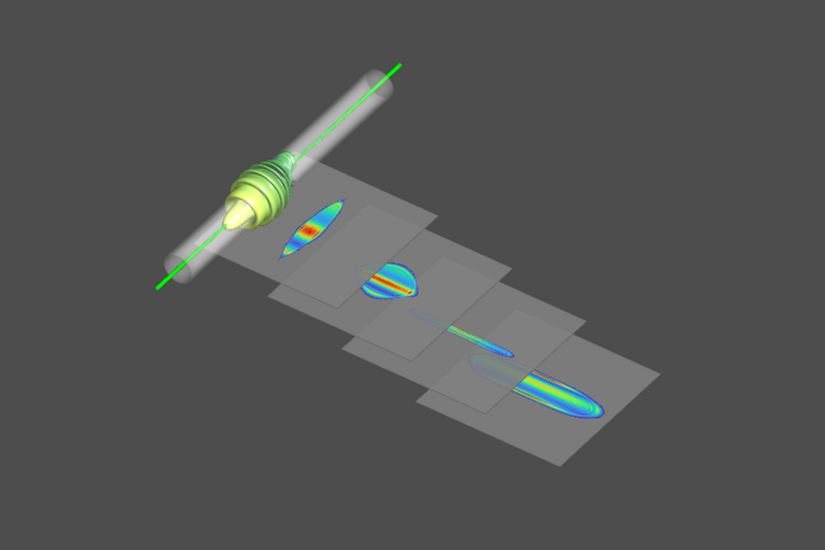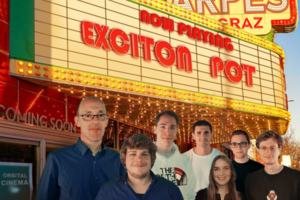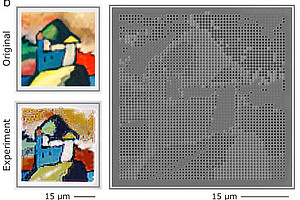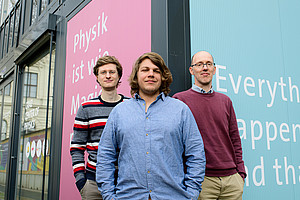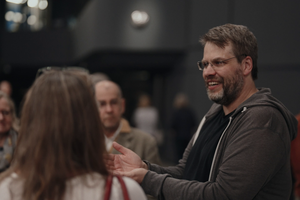For the cool figures in scientific publications one nowadays uses ray tracing programs: here one traces the light from the object to the camera, and additionally considers light diffractions and reflections. Things get more complicated when wave interferences come into play, such as in a measurement device for nanoparticle characterizations developed at the Medical University of Graz by Brave Analytics. Particles are pumped through a cylindrical capillary alongside a focused laser beam, and the scattered light is observed from the side by a camera. Depending on the focus plane position one observes vertical or horizontal lines, or diamond-shapes features with numerous interferences.
How can one describe this theoretically? Our first considerations “this can be done easily” (but how?) and “this has certainly already been done” (but by whom?) turned out to be equally unsuccessful as our ray tracing attempts. In a publication, which has now appeared in the journal Nanophotonics, we finally chose the old-school attempt with analytical functions. The light scattering of the spherical particles is described using Mie theory, thereafter the scattered fields are transformed from spherical to cylinder coordinates, and are finally propagated through the cylindrical capillary. Everything is not overly complicated but sufficiently unpleasant to do the job only if really needed.
And since nowadays we are not as used to special functions as in the times of James Clark Maxwell and Gustav Mie, we checked our results with experimental images, finding perfect agreement. Sometimes the good old things still work best.
Imaging the scattered light of a nanoparticle through a cylindrical capillary
Ulrich Hohenester, Christian Neuper, Marko Šimić, Christian Hill
Nanophotonics (2024)
https://www.degruyter.com/document/doi/10.1515/nanoph-2023-0773/html
